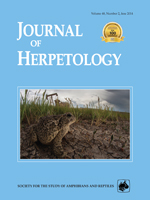Translocation, a management and conservation strategy used commonly in which animals are moved from their sites of origin to other localities, has proven controversial. We examined the physiological and behavioral impacts of repeated handling and short-distance translocation on rattlesnakes, which are often translocated from areas of human use because of a perceived threat to people. Northern Pacific Rattlesnakes (Crotalus oreganus oreganus) were radiotracked for 2 months, during which time one of three treatments was imposed weekly: translocation, walk and release at that day's capture site (handling control), and undisturbed control. At both the beginning (spring) and the end (summer) of the study, blood samples were obtained before and after an acute handling stressor, and plasma concentrations of corticosterone (CORT) and testosterone (T) were determined. All rattlesnakes showed a CORT stress response, but baseline and stressed concentrations of neither hormone were affected by either translocation or handling. However, the response of both hormones to stress differed between spring and summer, with a greater increase in CORT and a detectable decrease in T occurring in summer. Activity range size was affected by translocation, whereas no effects on snake behaviors recorded during observer approach were detected. Rattlesnakes appear quite resilient to the potential impacts of frequent handling or short-distance translocation.
BioOne.org will be down briefly for maintenance on 17 December 2024 between 18:00-22:00 Pacific Time US. We apologize for any inconvenience.
How to translate text using browser tools
1 June 2014
Physiological and Behavioral Effects of Repeated Handling and Short-Distance Translocations on Free-Ranging Northern Pacific Rattlesnakes ( Crotalus oreganus oreganus)
Matthew L. Holding,
Julius A. Frazier,
Scott W. Dorr,
Sloane N. Henningsen,
Ignacio T. Moore,
Emily N. Taylor
ACCESS THE FULL ARTICLE

Journal of Herpetology
Vol. 48 • No. 2
June 2014
Vol. 48 • No. 2
June 2014




